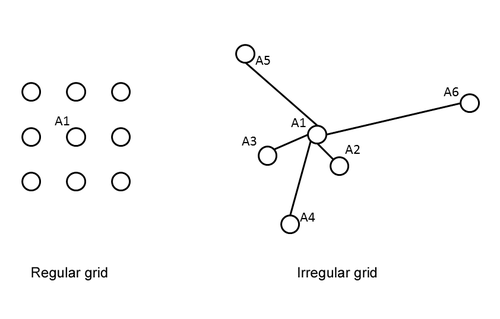Cluster Alpha vs. Neighbor Distance
| Module information | |
| Modules | BESA Statistics |
| Version | 1.0 or higher |
It is often assumed that the cluster size should be manipulated by varying the neighborhood distance. While this is possible, it is not 100% correct. Cluster size should be manipulated by using the "Cluster Alpha" value, i.e. the alpha level that determines, if a sampling point will be included in the cluster or not. A higher "Cluster Alpha" value (e.g. p=0.1) will lead to larger clusters, a smaller "Cluster Alpha" value (e.g. p=0.001) will lead to smaller clusters, as the entry threshold for a sampling point is thus raised. The "Cluster Alpha" value is not the chosen significance level of the permutation test! It merely determines the size of the original clusters entering the permutation. The idea of the "Neighbor Distance" is to define neighborhood (neighbor relations) of a given node (in our case a node could be an EEG/MEG channel or a voxel in the volume conductor). In the case of voxels, the grid used within the volume conductor (the head model) is a regular grid (see Figure 1 left) and the direct neighbors of a given node are uniquely defined – all nodes directly accessible from the current node (i.e. there are no nodes between the current node and its neighbors). In the case of EEG/MEG data, the channels are not in a regular grid but in an irregular one (see Figure 1 right) and the neighbors of node A1 (see Figure 1 right) are not uniquely determined. It could be that only A2 is a neighbor of A1 or it could be that all nodes are defined as neighbors of A1. That is why it is necessary to manually define a radius (neighborhood distance) that includes all neighbors of node A1. One could choose a large radius like 100 cm. This makes no sense, however, because this way a direct connection between all nodes would be established. This could theoretically lead to a cluster of one left ear electrode and one right ear electrode – without any real connection in between. The idea of the neighbor distance is to connect each node with its direct neighbors. Since the grid in sensor level data is not equidistant, a manually chosen distance will yield a different number of neighbors for different nodes but this is not critical.
